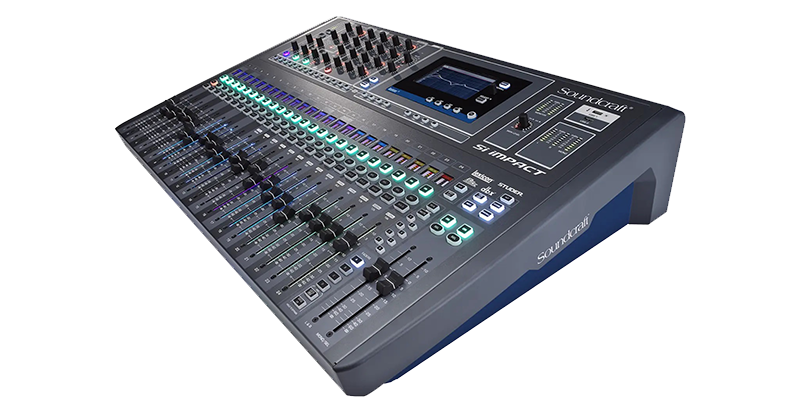Mixing consoles designed for radio often feel like exercises in compromise. They’re either stripped down to the bare essentials or, at the other extreme, over-engineered to a point where practicality suffers. Even the celebrated desks from Studer—renowned for their engineering depth and sonic pedigree—can be more rigid than a modern broadcaster needs. Yes, they offer endless features, but flexibility often comes at the cost of a steep learning curve.
That’s what makes the Soundcraft SI Impact such an interesting alternative. It took us a full week of testing and trial-and-error programming to tailor the console specifically for radio operations. The documentation borders on opaque, and there were moments where the manual seemed more an obstacle than a guide. But one of the board’s unheralded strengths is its resilience: no matter how far you push your experimentation, you can always reset the system back to factory state without fear of breaking it. That safety net proved essential.
Through persistent tweaking, we eventually landed on a workflow that matched our broadcasting needs. For practical reasons, we paired the SI Impact with Ocenaudio—a DAW that runs smoothly on both Mac and Windows. This cross-platform compatibility turned out to be a game-changer: contributors, regardless of their hardware, could easily record or generate stereo files. The stereo image itself can be managed directly through Ocenaudio’s preferences, just as with any other professional DAW.
The Soundcraft DNA
In terms of design, the SI Impact is unmistakably a Soundcraft product. Audio quality, meanwhile, carries the unmistakable lineage of Studer—the name itself proudly emblazoned on the console’s front panel. And, as with any system that promises to “do everything,” execution can be uneven. Some features shine brilliantly; others leave you wishing for refinement.
Channel management is intuitive, with faders and controls offering a reassuring sense of precision. Where the board falls short is in microphone amplification. The 48-volt phantom power is serviceable but underpowered; it lacks warmth and demands the use of an external mic preamp, especially when working with studio-grade microphones. On the other hand, the onboard DBX processing and compression are perfectly adequate for broadcast purposes. Together, they provide the kind of balance and polish that radio production demands, without excessive coloration.
And while radio is its natural home, the SI Impact is hardly a one-trick pony. With its clean digital architecture—free from analog hiss—and a robust effects section, the console is more than capable of handling live concerts or direct-to-air events, delivering a studio-level sound in real time.
Practical Quirks
Some quirks remain. The headphone output, for example, is tucked away in an inconvenient spot, which makes routing to a professional headphone amplifier the smarter move. Fortunately, a simple Jack-to-XLR connection solves the issue, giving engineers the option to drive an external amp without sacrificing monitor outputs.
The built-in Lexicon effects suite, another hallmark of Soundcraft design, provides more than enough for radio applications—whether for light vocal processing, acoustic sets, or rough demos. For full-scale studio recording or demanding outdoor live work, you may still want external gear to fine-tune the sound. But in a strictly broadcast environment—whether for news, commercials, or voice-over, the SI Impact holds its own without hesitation.
Final Verdict
The Soundcraft SI Impact isn’t for everyone. Its complexity can intimidate, and newcomers should expect a learning curve that borders on frustrating at times. Yet once mastered, it proves to be one of the most versatile and effective consoles in its class. Contrary to some criticisms, the navigation screen is sufficiently large, and those with larger fingers can always rely on a stylus with an eraser tip for effortless menu control.
Soundcraft and Harman Kardon clearly made deliberate design choices here—prioritizing flexibility and professional sound quality over plug-and-play simplicity. That said, the inclusion of a handful of ready-made configuration templates would save users significant setup time, and one hopes future firmware updates might address this.
Ratings:
- Interface: ★★★ (complex, steep learning curve)
- Ergonomics: ★★★★★
- Audio Quality: ★★★★★
- Equalizer: ★★★★
- Compressor: ★★★
- DBX Processing: ★★★
- Effects (FX): ★★★★
Overall Score: 4/5
Bayou Blue Radio
Orctober 1st, 2025


